All issues

Volume 39, Issue 1
Displaying 1-2 of 2 articles from this issue
- |<
- <
- 1
- >
- >|
Article
-
Kunitaro Fukuyama2022Volume 39Issue 1 Pages 50-54
Published: 2022
Released on J-STAGE: April 13, 2022
JOURNAL FREE ACCESSA few reports have described recently developed antifungal drugs combined with physical therapy for dermatophytoma. A total of 12 patients (8 males and 4 females, mean age 73 years) who visited the Department of Dermatology at Kansai Rosai Hospital between April 2017 and March 2020 diagnosed with dermatophytoma and treated by surgical debridement and topical antifungal drugs were included in this study. The patients had 14 dermatophytoma lesions. Surgical avulsion was performed at the first visit. Ten of the 14 nails were evaluated. By approximately 1 year, seven nails were completely cured with no clinical involvement of the target toenail as shown by the negative potassium hydroxide test. ; tTreatment failed for three nails (<30% improvement or worsening). The second efficacy evaluation was performed at the last visit or when changing therapeutic drugs were changed. This e second efficacy evaluation revealedshowed complete cure in eight nails, marked improvement (>60% improvement in nail involvement ratio) in one nail, and improvement( (30% or more to less than 60%) ) in one nail. All 10 evaluable dermatophytoma lesions disappeared in 16 months. The findings indicate the effectiveness of nail abrasion and topical antifungal drugs in treating dermatophytoma.View full abstractDownload PDF (2609K) -
: A randomized, parallel-group, multicenter studyHiroo Yokozeki, Tomoko Fujimoto, Shunsuke Watanabe, Shuhei Ogawa, Chie ...2022Volume 39Issue 1 Pages 55-63
Published: 2022
Released on J-STAGE: April 13, 2022
JOURNAL FREE ACCESSA long-term study was performed to assess the safety and efficacy of glycopyrronium tosylate hydrate (GT) wipes in Japanese patients with primary axillary hyperhidrosis. Patients applied 3.75% or 2.5% of GT wipe to the left and right axillae once daily for up to 52 weeks. A total of 377 patients (GT 3.75% group, n=194; GT 2.5% group, n=183) received at least one application and outcomes were analyzed. The incidence rates of adverse events were 69.1% and 73.8% in the GT 3.75% group and GT 2.5% group, respectively. Many adverse events were mild in severity and recovered or improved. One death (due to cardiac failure congestive) was reported in the GT 3.75% group and 1 and 6 serious adverse events were reported in the GT 3.75% and GT 2.5% groups, respectively. Of these, only 1 case, mydriasis, in the GT 3.75% group had a causal relationship with the study drug. Adverse events leading to discontinuation or interruption of the treatment and adverse events on the application sites were limited. The rates of adverse events related to anticholinergic activity mydriasis/vision blurred were 13.4% and 10.9% in the GT 3.75% group and GT 2.5% group, respectively, and symptoms associated with urination was reported in 6.7% and 5.5% in these groups, respectively. The rates of these adverse events did not increase with long-term application. GT efficacy, which was measured based on the Hyperhidrosis disease severity scale, gravimetrically-measured sweat production and Dermatology life quality index was maintained throughout the study. The long-term efficacies of GT 3.75% and 2.5% were comparable. The long-term application of a GT wipe in patients with primary axillary hyperhidrosis was well tolerated, and high efficacy was maintained. This finding suggests that a GT wipe can provide benefit as a first-line treatment for primary axillary hyperhidrosis in Japan.View full abstractDownload PDF (2380K)
- |<
- <
- 1
- >
- >|